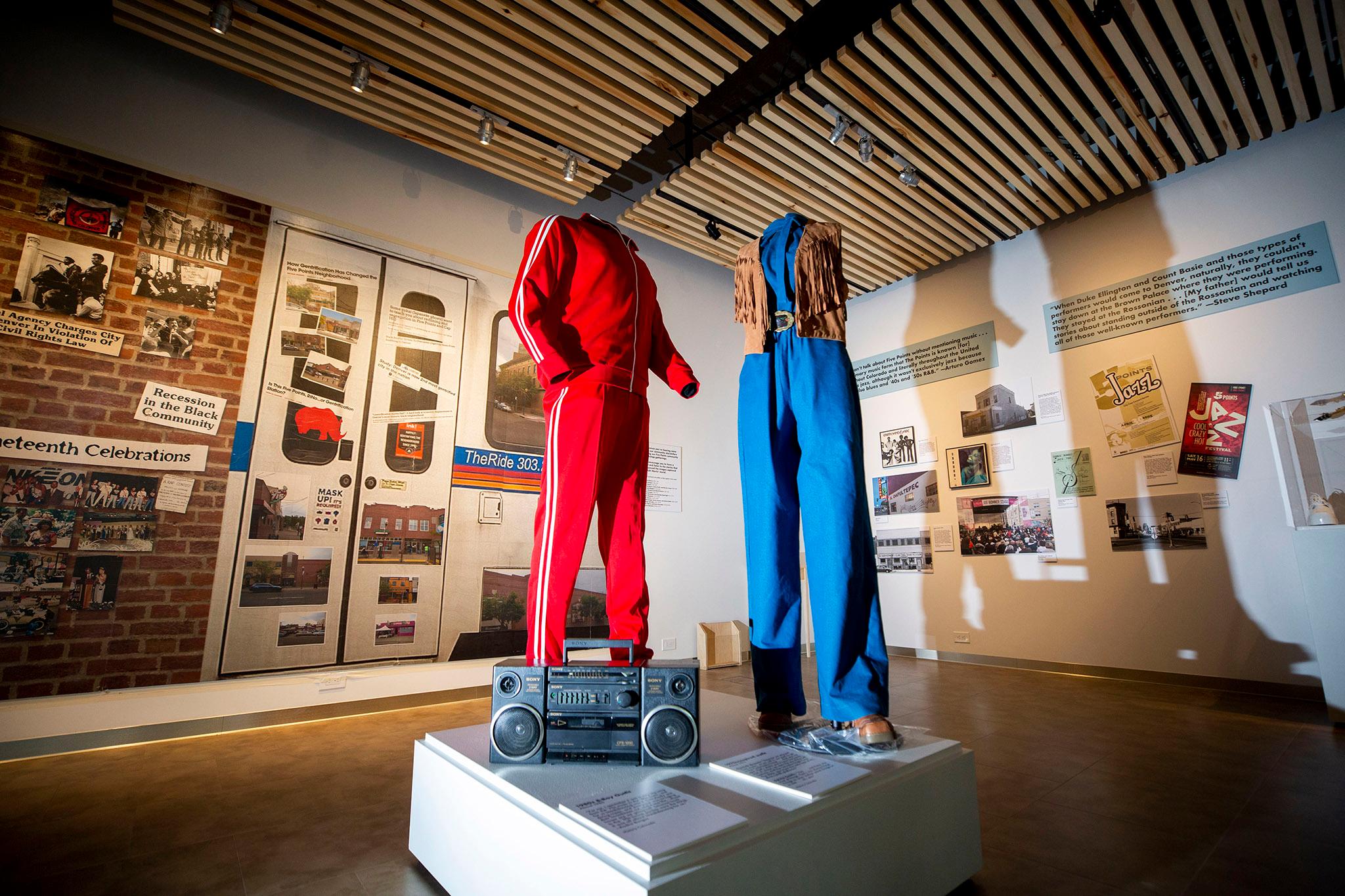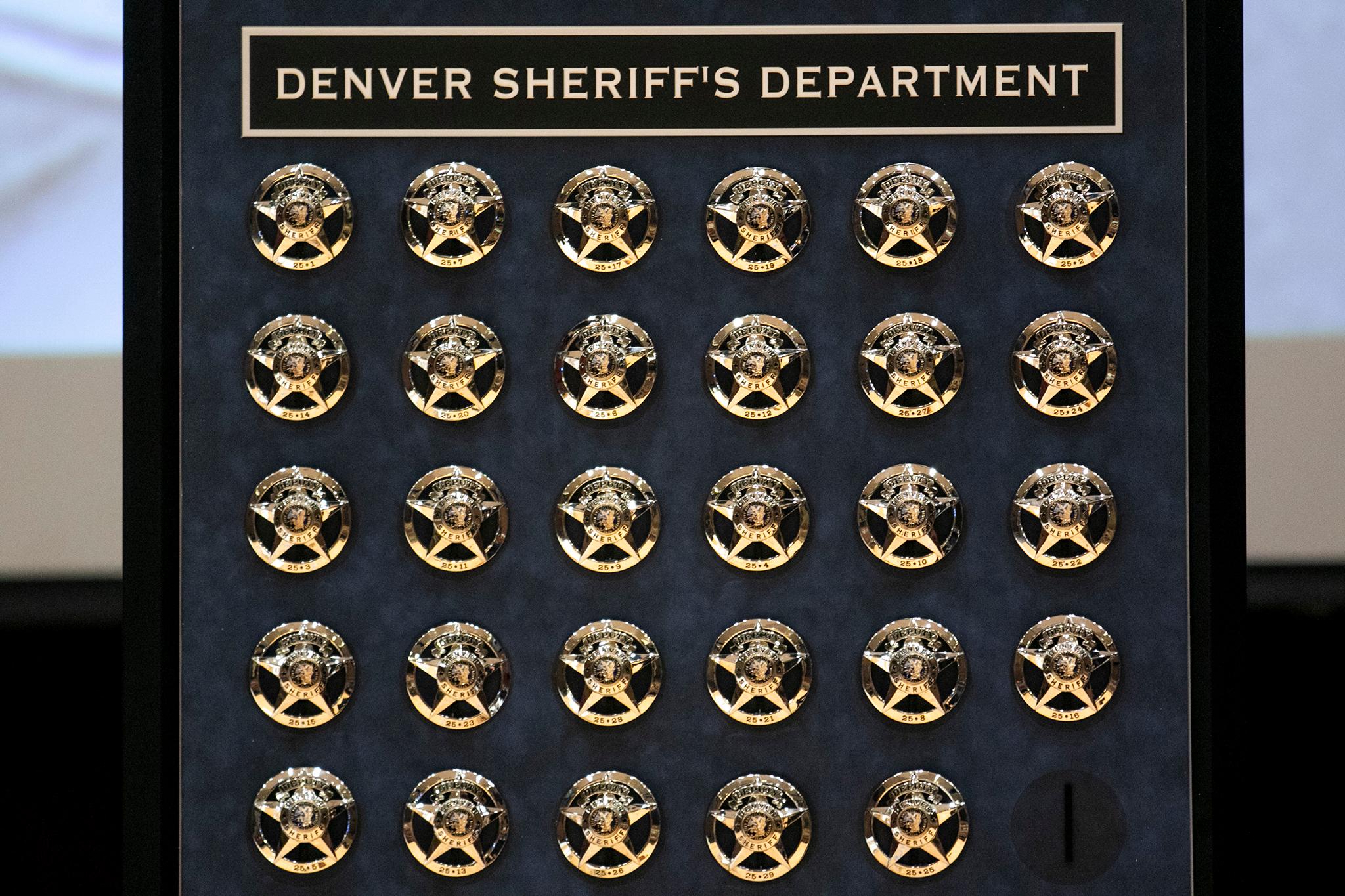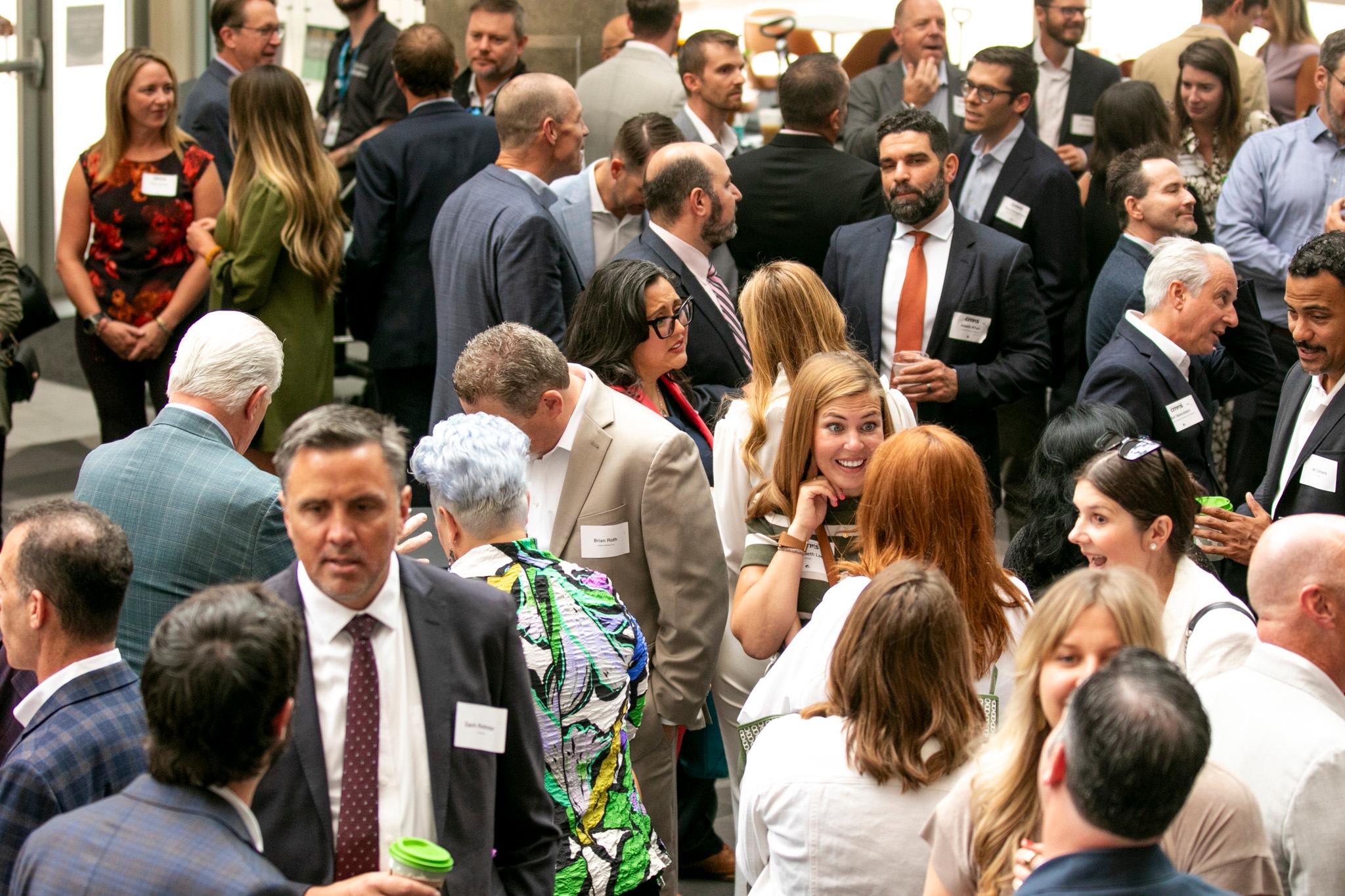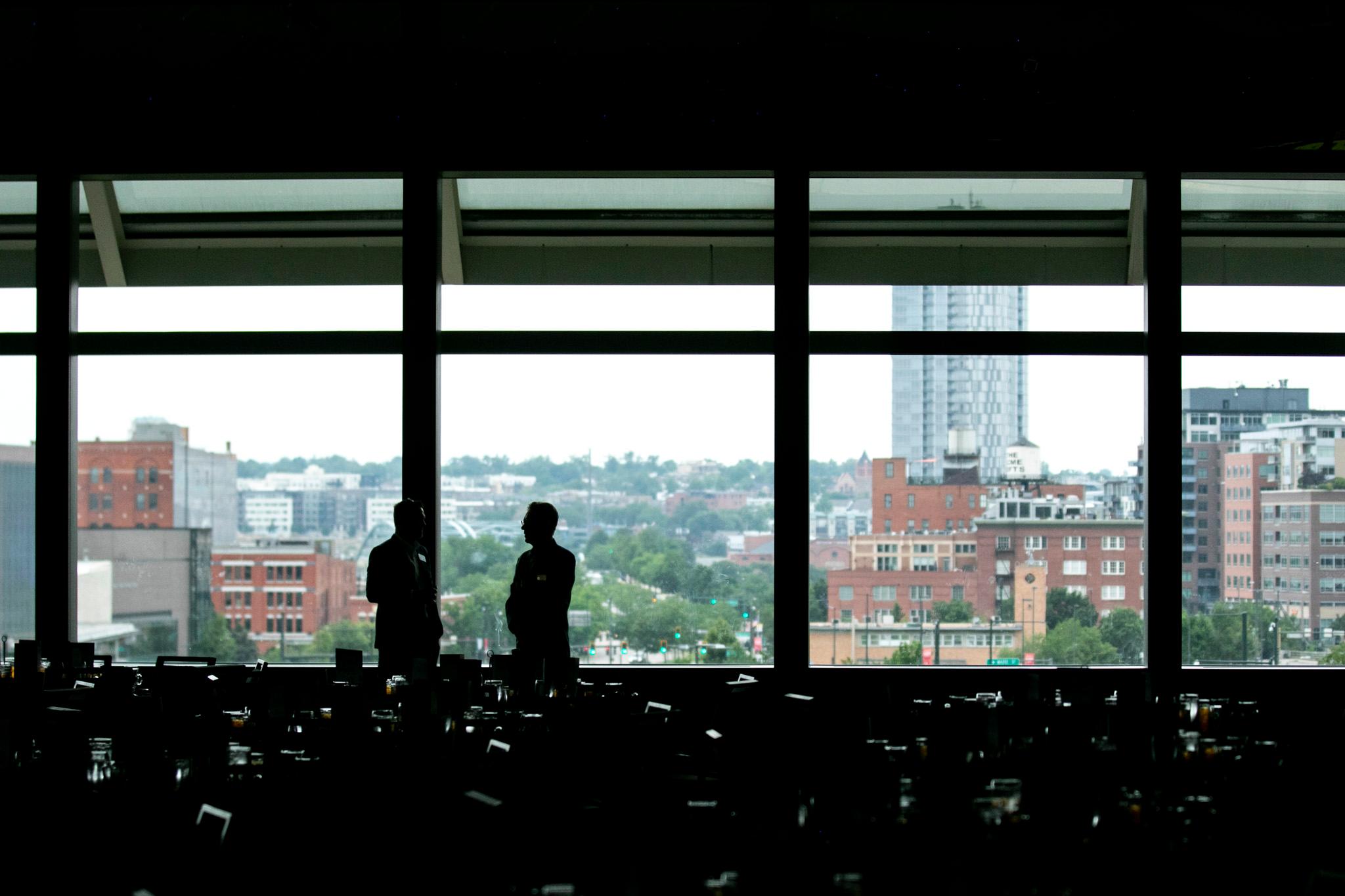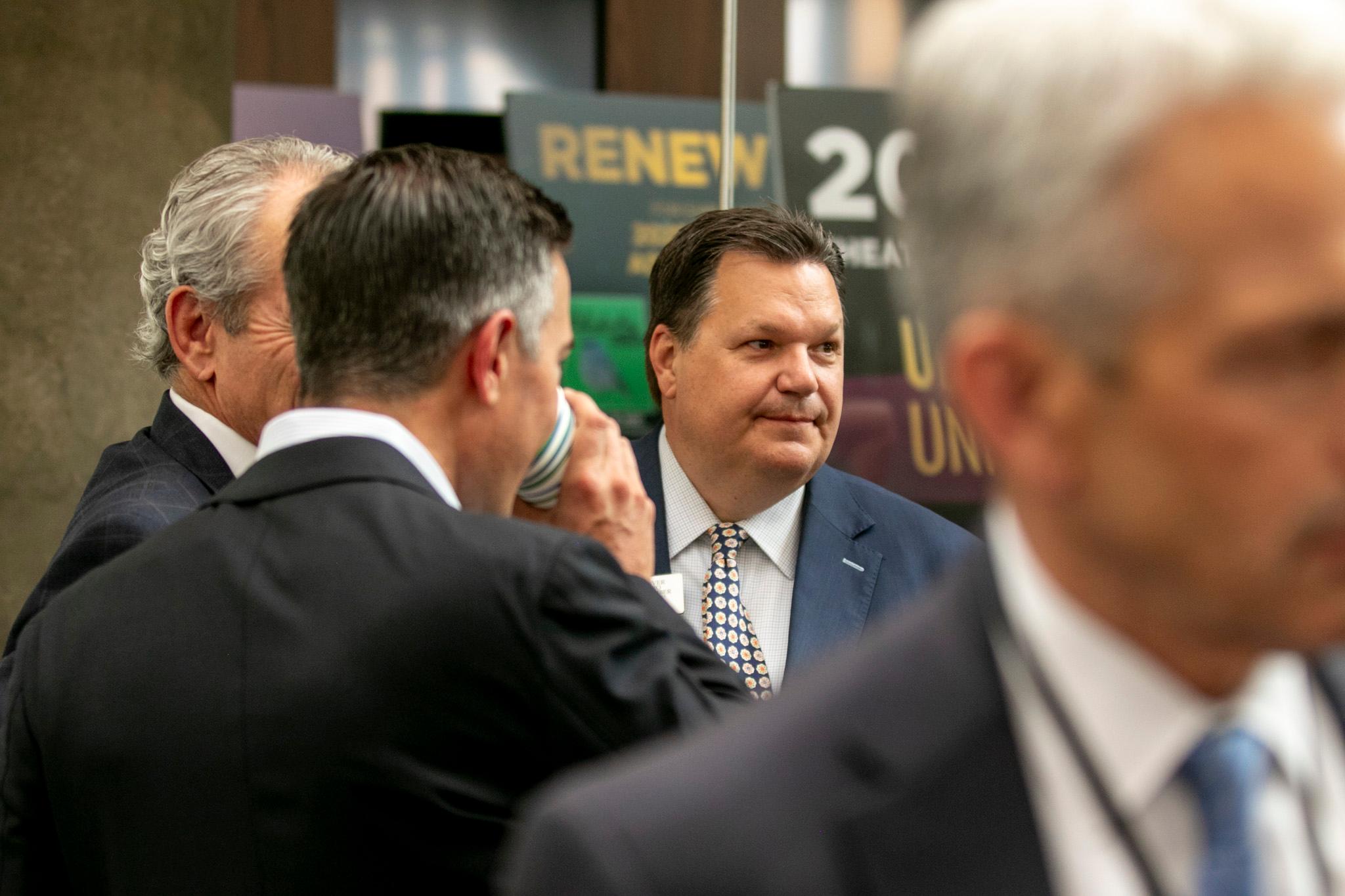This week, a room on the first floor of Denver's History Colorado Center was converted into a walk-in time capsule. The exhibit, Five Points Plus: Neighborhood Memory Project, is a walk through of Five Points' past by way of the memories of the people who've lived there.
At the center of the exhibition is a mural created by artist Adrienne Norris. It's made up of panels wheat-pasted and painted over with scanned archival images and depictions of people and places essential to Five Points. Scan the mural from left to right and you'll get a brief depiction of the neighborhood's evolution over time, starting with a visual acknowledgment that the land was first home to Native Americans. You'll see Manual High School lockers, yearbook pages, photos of Juneteenth celebrations. In the foreground are portraits of some of Five Points' prominent historical figures and community leaders, including Clara Brown, Dr. Justina Ford, Dr. Joyce Davis and Sarah Foster.
Around the room, you'll see community relics like yearbooks, menus, albums and posters. But the key element of the exhibition is sound. The voices of community members play on speakers, filling the room with stories about the people they knew, the places they went, and the lives they lived in Five Points.
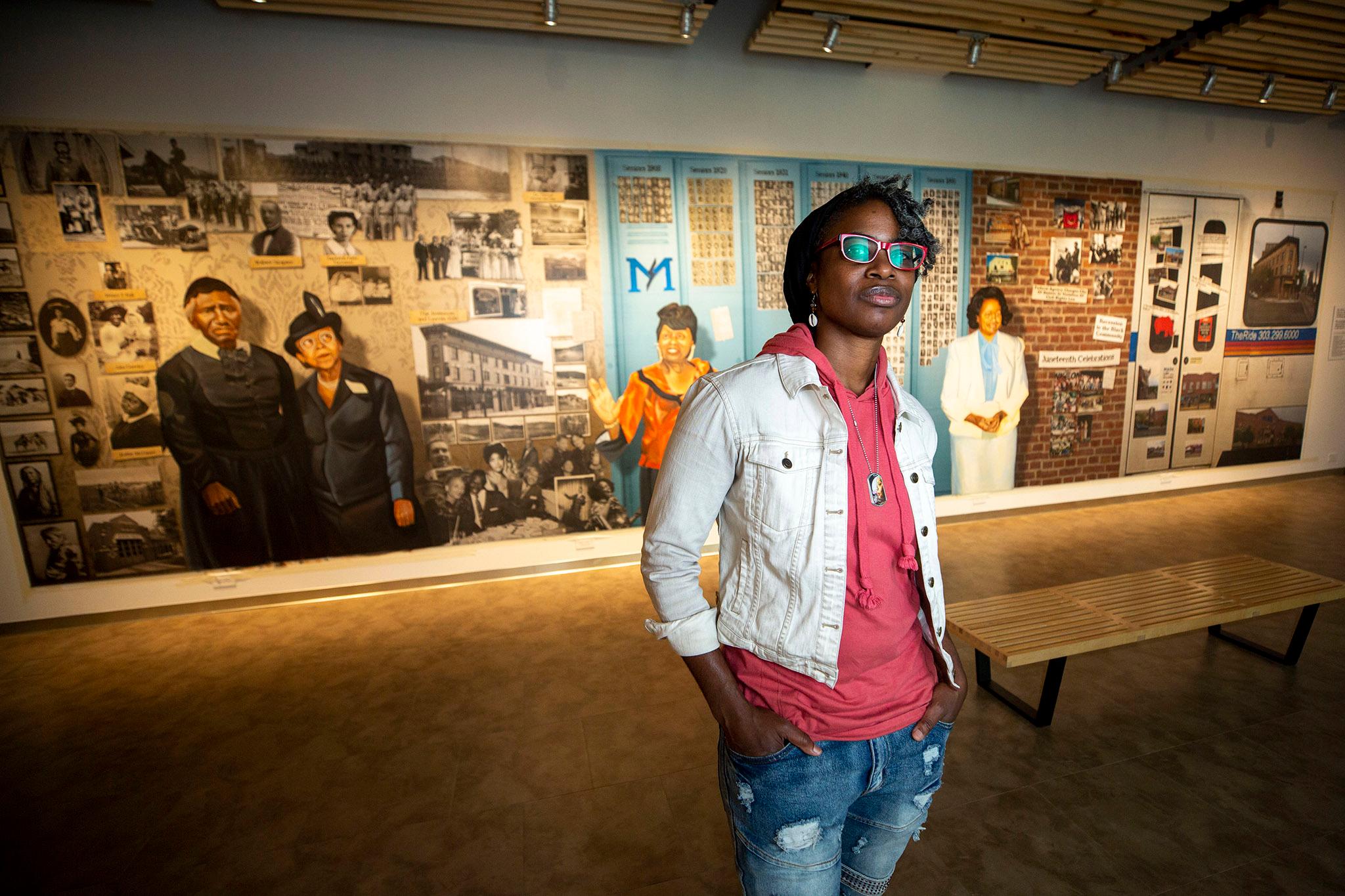
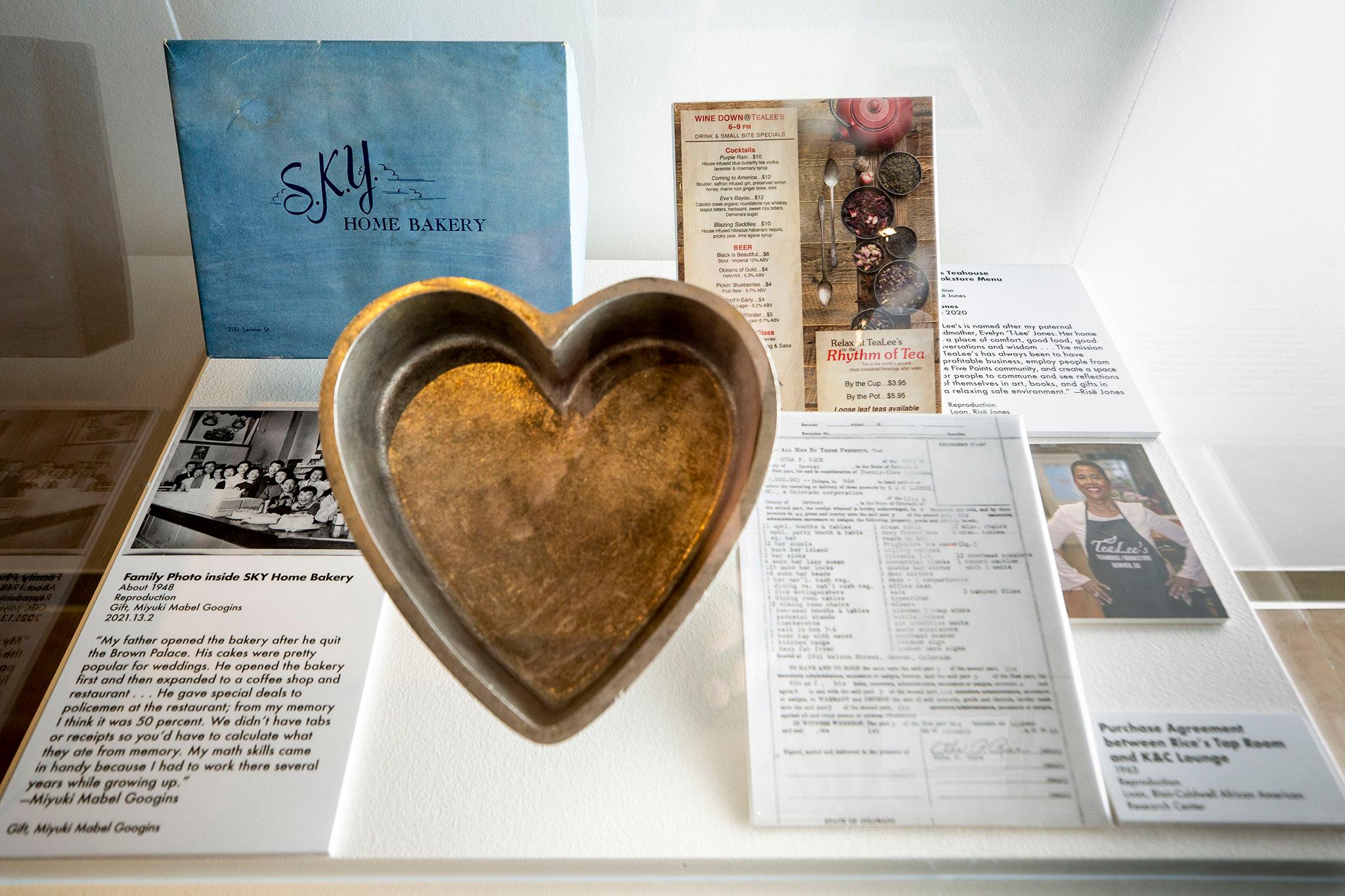
For Five Points Plus, History Colorado partnered with the Black American West Museum & Heritage Center to create an expression of a collective memory.
They invited community members to share old photos and to participate in conversations about their experiences living in Five Points and immortalize those memories in the exhibit.
The museum met over Zoom with about 20 different community members split into three groups and encouraged them to share memories from their time living in Five Points. Cori Iannaggi, History Colorado's Gallery Manager, said that something that was apparent during the conversations was how much of a community Five Points really was. Many of the participants knew each other, or else knew someone the other person knew. One person's memory would trigger a memory for someone else.
"It was just people building on one another, and it was just this very organic experience," Iannaggi said. "You almost wanted to be there at the time that they were all talking about because it just seemed like it was just such a close-knit community."
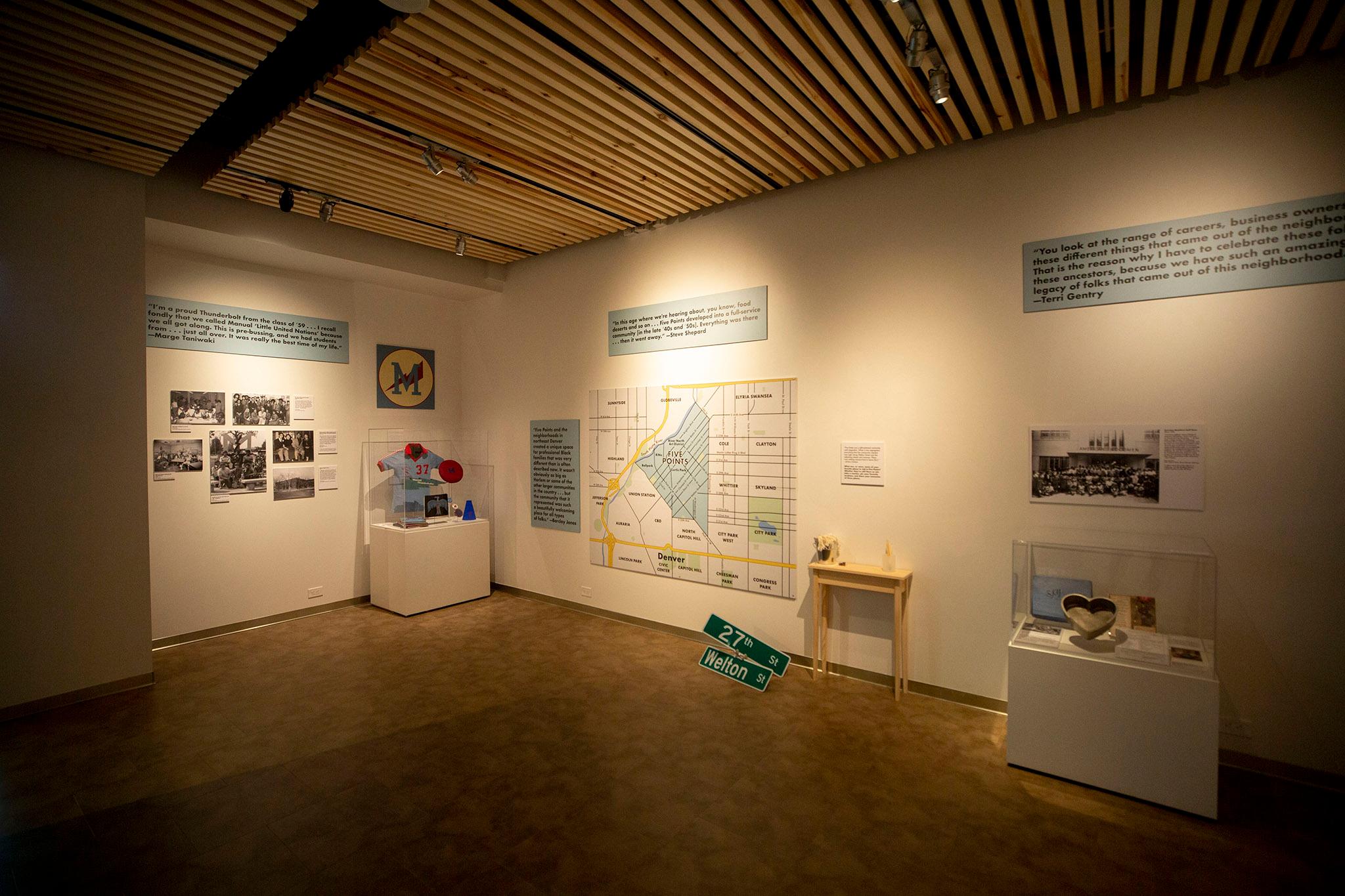
The exhibit is one installment within a larger project at History Colorado called Museum of Memory.
Through the project, the museum collaborates with different communities in Colorado to build exhibits around history as people actually experience it.
"This isn't maybe the 'history books' version. This is the 'people who lived it' version of history. And there's something really powerful about the collective element of that," said Dawn DiPrince, History Colorado's chief operating officer and the project leader for Five Points Plus. "There's some magic that happens when you bring people together. I mean, you've probably experienced this yourself, right? You might be at a family reunion, and people are riffing off of each other's stories, or one person's story makes the other person remember something."
Iannaggi stressed that the museum is a "co-author" of the state's history, and they have a responsibility to partner with the people who live in the state.
"We're not the experts of the community. We're here as a vessel to share the stories," Iannaggi said. "As you look around, you'll notice that there's very little interpretation in this gallery from our side. It's all quotes from the community. We want them to tell their story. And we want them to feel as though their voice is heard, because they know the story the best. They lived there."
In one corner of the exhibit sits a small wooden table with a notebook and pencils. Above it, a sign invites visitors to share their own Five Points stories.
"We see this, we hope, as the start of a conversation," DiPrince said. She said History Colorado is open to holding more memory workshops in the future. "We really hope that this is a call for more people wanting to share and helping us build this really rich understanding of this important place in Colorado history."
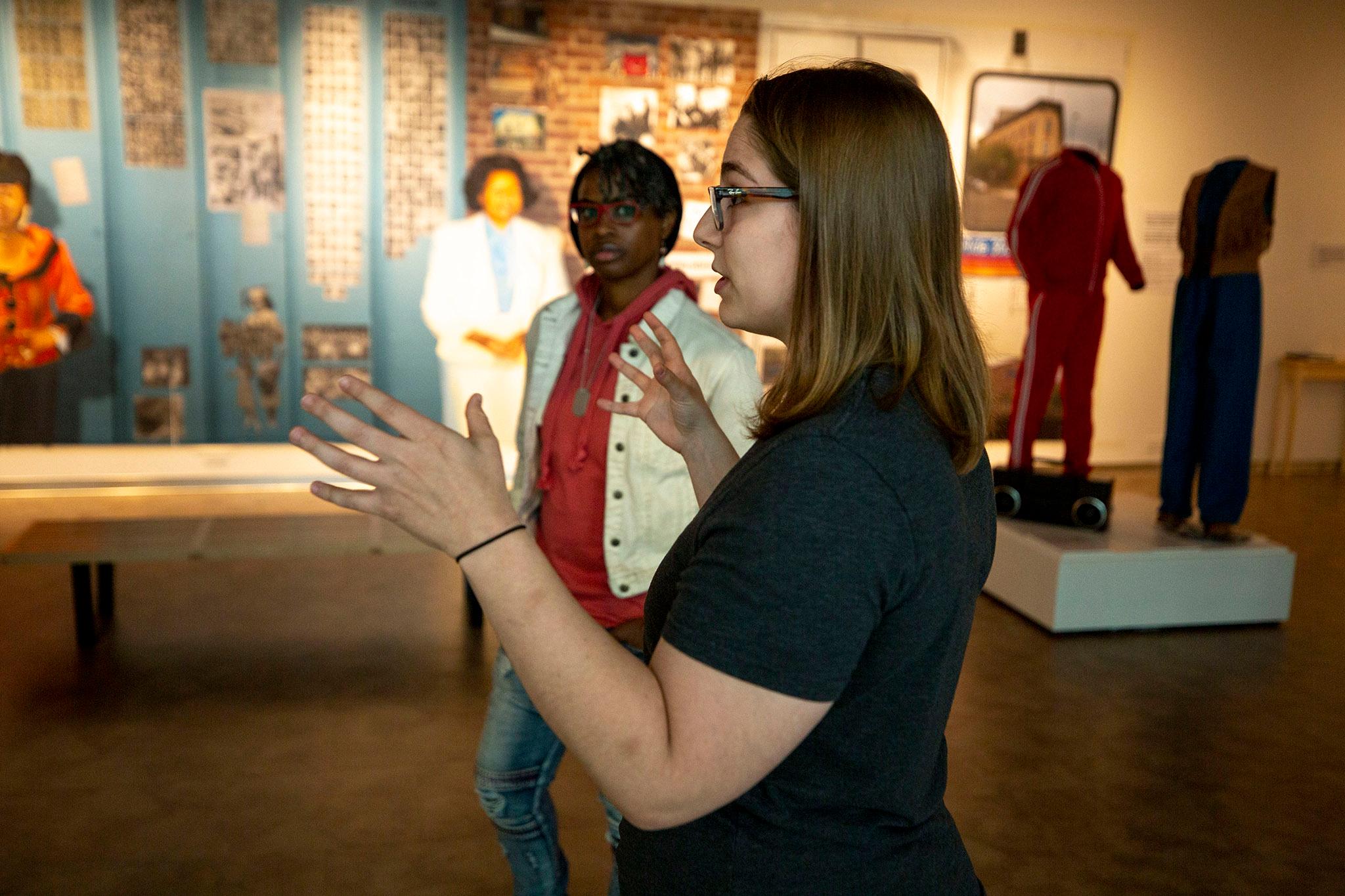
History Colorado has created exhibits with nine communities in Colorado, each of which they say is, in some way, under threat, be it of environmental racism, infrastructure inequality or gentrification.
Denver is one of the most rapidly gentrifying cities in the country. And when people think of gentrification in Denver, they often think of Five Points. DiPrince said gentrification in Five Points poses a threat to the sense of community and shared experience there.
"It's a tight, tight network of connection and taking care of each other," DiPrince said. "So sometimes when you're talking about neighborhoods that are gentrified, it isn't just about removing people from the space. It's about shattering all of those connections to other people."

In the memory workshops, History Colorado took care to facilitate rather than guide conversations.
In one session, for example, they asked participants to draw the floor plans of their childhood homes from memory and allowed conversation to flow from there as that prompt sparked memories. In another, they played songs that then triggered musical memories.
Those recorded conversations will play on loop at Five Points Plus, recounting memories like walking all over the city to go to house parties and leaving covered in sweat from dancing; people coming to sit on the porch to listen to someone's dad and uncle's band practicing in an attic; going to funk shows and running after the bus in platforms; or graduating George Washington High School in the same class as Dianne Reeves, who sang at the graduation ceremony and received a standing ovation.
"We think of Five Points as a quintessentially Black neighborhood, which is true. And it was the redline neighborhood. And so everybody who was undesirable at the time wound up there," Adrienne Norris, the muralist for the exhibit, said. "It wasn't just one group or another. It was far from homogenous. It was a mixture, and everybody was able to live, operate and work together."
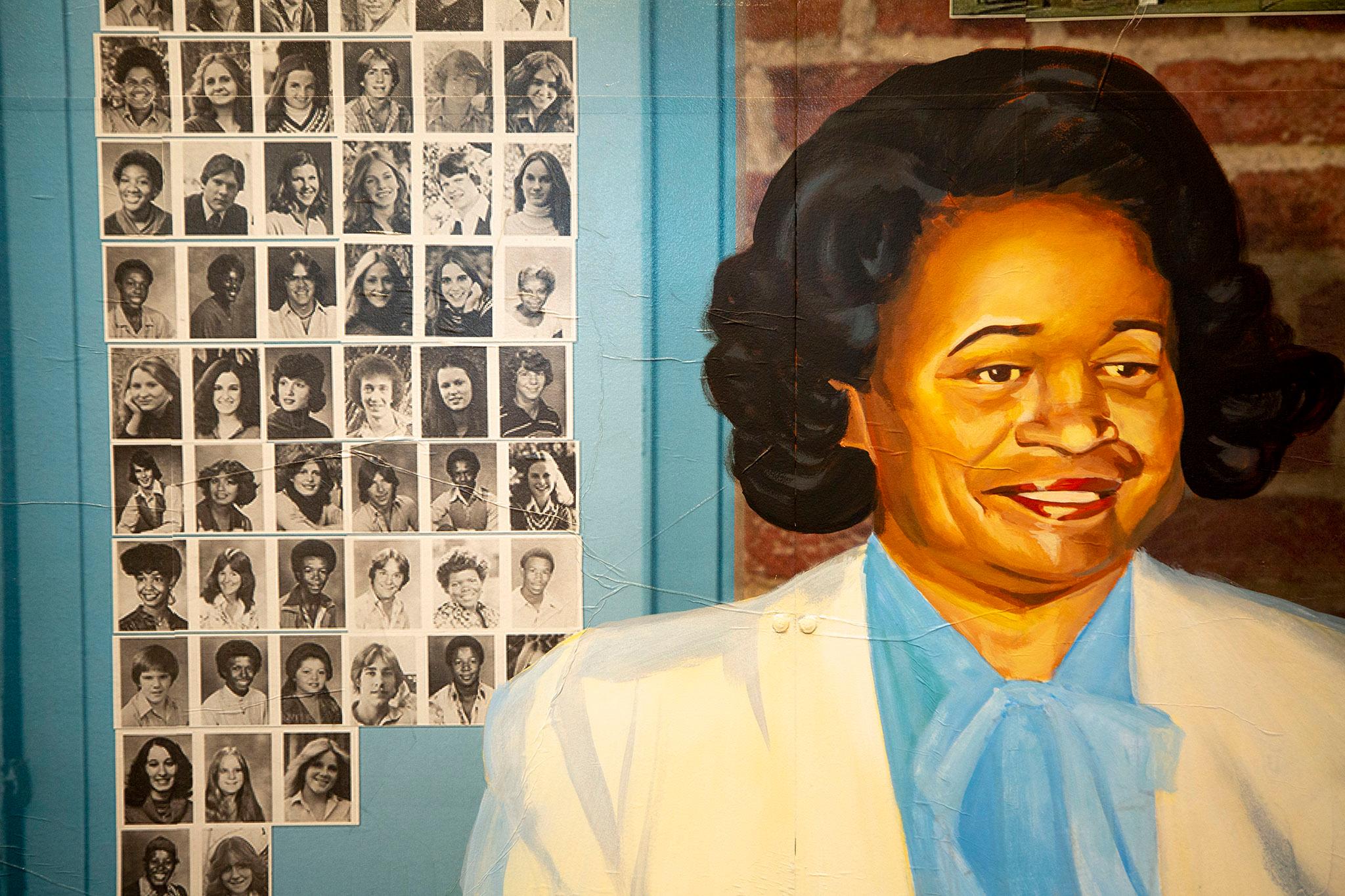
Another theme that emerged from the conversations was that Five Points was a self-contained and self-sustaining neighborhood.
"Looking at this pre-integration time, there were a number of people talking about this really self-reliant community," DiPrince said. "For oppressive reasons, but then they created this way to take care of each other that was a really beautiful response to terrible things."
Iannaggi said community members could find everything they needed in Five Points.
"You didn't have to leave. And people in the workshops talked about all these different small businesses, family owned businesses," Iannaggi said. "You can go to Ben's Super Market, and they had all the different types of food from different nationalities there."
Iannaggi said one participant told a story about the first time she and her sister were allowed to run an errand for their mom.
"And they thought that they were all independent, and they're going, and they felt so proud," Iannaggi said. "But little did they know, her mom called all the neighbors on the block to watch them to make sure that they were holding hands, being responsible. And I just think that's so cool. They just knew everybody."
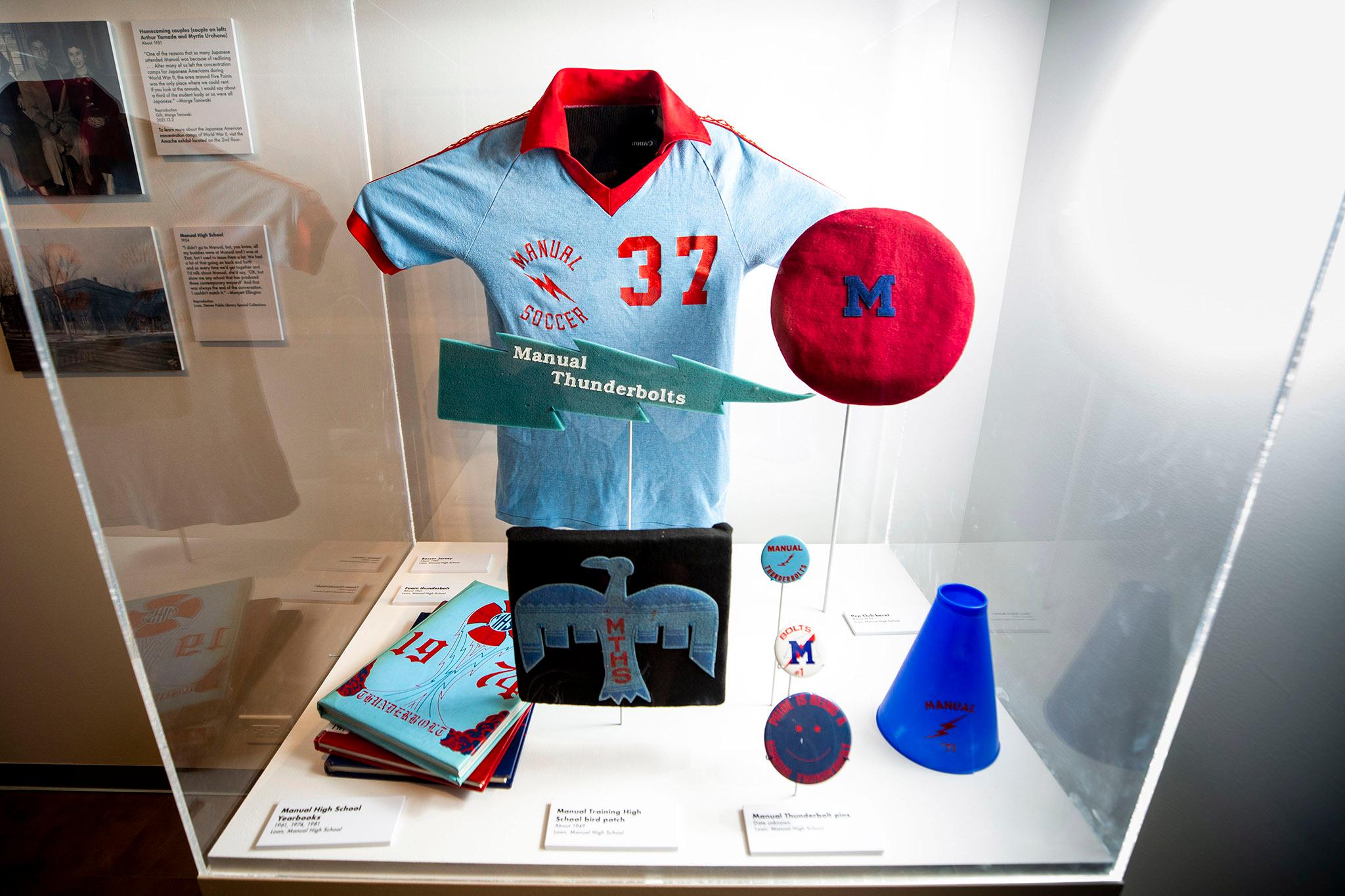
Norris listened to the recorded memory conversations when doing research for her mural. She pulled out key moments and themes from those conversations to focus on and poured over dozens of files in the Blair-Caldwell African American Research Library to dig up archival photos.
"It was an interesting puzzle, just collecting as many pieces as possible, not knowing whether they fit or whether they even went in the same piece," Norris said.
She said that as she delved into these community stories, she uncovered ones from her own family history. As she worked to figure out what she wanted to put in the piece, she told her parents, who're from Barbados, some of the stories she'd heard through the project.
"That triggered stories from my folks that I've never heard in my life," Norris said. "That's something I find amazing about this, too. There's sort of a universality of it, where we're talking about specific people in a specific place. But because of its specificity, it allows us to access a more broad sense of experiences."
She said one of her intentions with the mural was to help contribute to a greater understanding about the relationship between place and history, particularly for transplants to a neighborhood.
"I hope that in sparking conversations among people who do have memories of place, it trickles into conversations of those who are newer and maybe don't understand where they landed," said Norris, who is a transplant herself. "There's a lot that you don't know, and often you just sort of take for granted what you're witnessing right in front of you without actually wanting to dig into the roots."
DiPrince says the Museum of Memory helps demonstrate how we can experience and learn history in a number of ways.
Museums don't have to be an intellectual, cerebral experience. We can learn history from storytelling or through art. It can be read on our own faces.
"It doesn't just have to live on a piece of paper," DiPrince said. "We have incredible archives here at History Colorado, but one of the things we forget is we are archives unto ourselves. The bend of your hair may be inherited from one of your ancestors, the color of your eyes. That's archival, in and of itself."
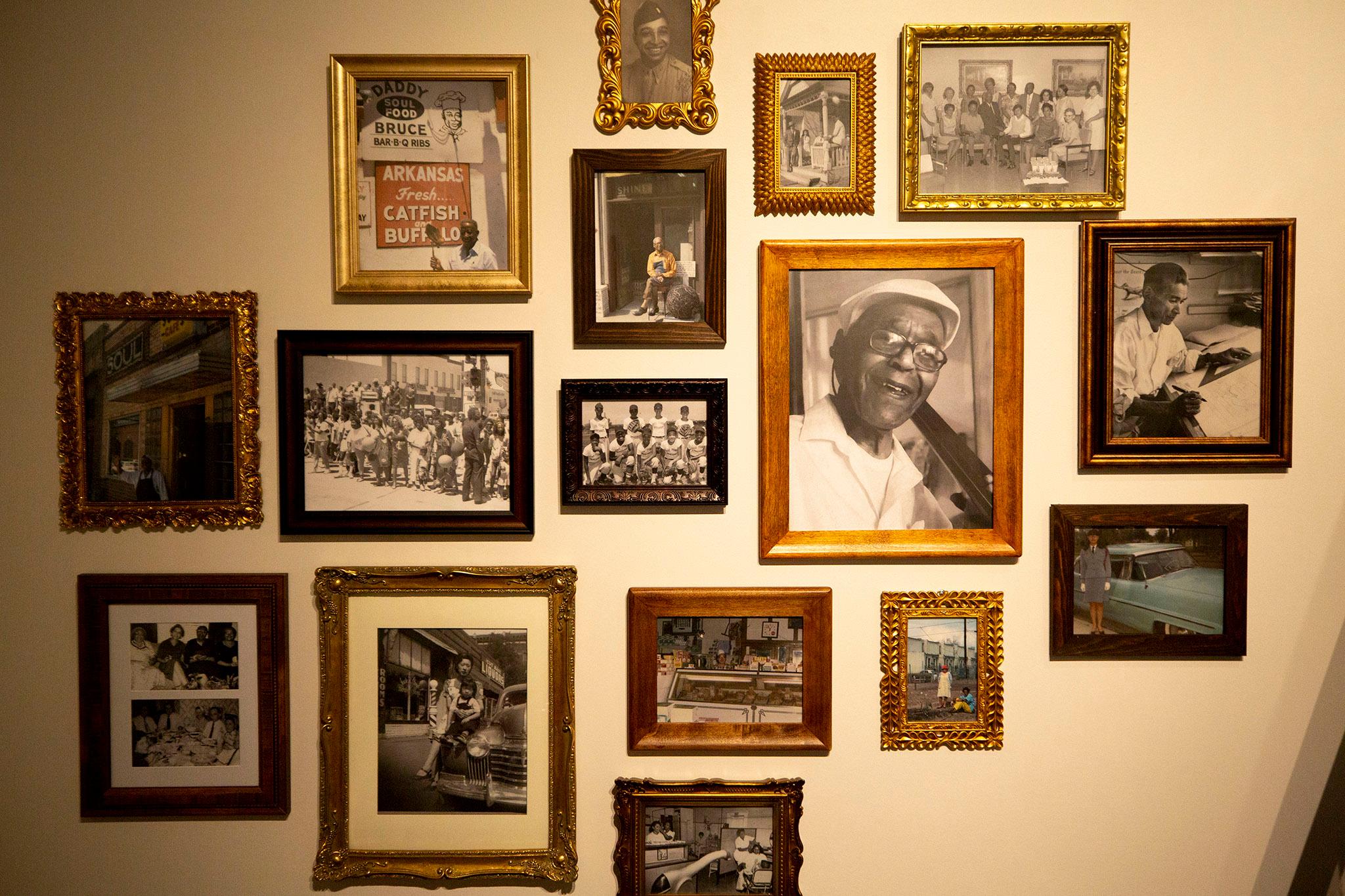
Five Points Plus is a temporary exhibit, but the stories recorded for it will remain preserved, incorporated into the state's collection after the exhibit closes this fall.
"For many people, that's a really important piece to it," DiPrince said. "This idea that their descendants, maybe three, five generations beyond, could come and learn about what it was like to live in their neighborhood at a certain time."
Five Points Plus: Neighborhood Memory Project will be at History Colorado Center from June 25-October 2021.

